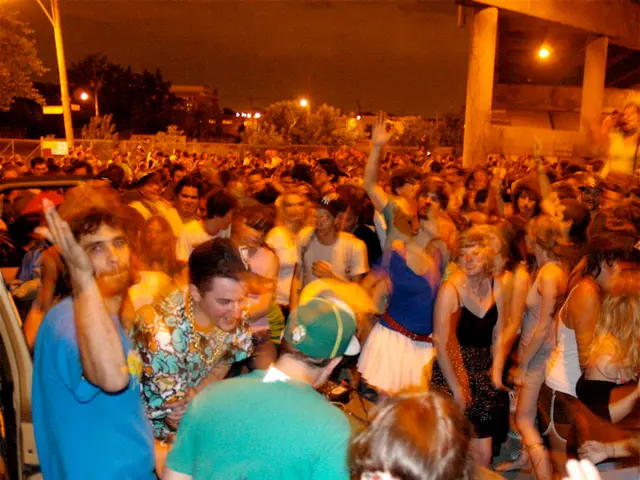Liveboard Suitability Explored: A Guide for Decision Making
For underwater photographers seeking a rich and diverse underwater experience, liveaboard diving emerges as a popular choice over traditional dive resorts. The mobility, access to a wide range of dive sites, and multiple daily dives offer a unique opportunity to capture an array of marine life and habitats.
One of the key advantages of liveaboards is their access to remote and varied dive sites, which are often inaccessible from land-based resorts. This increases the chances of unique photographic subjects and allows photographers to encounter a broader diversity of marine life. Some liveaboards, like the Arenui and Dive Damai, even offer access to areas that land-based resorts do not visit, such as remote parts of Raja Ampat.
Liveaboards also offer multiple daily dives, often up to 3-4 per day, enabling more shooting opportunities and maximising time underwater. Additionally, some liveaboards, such as Sipadan Water Village, have dedicated facilities for photographers, including camera stations, gear storage, and easy rinse tanks tailored for photo equipment.
The social atmosphere on board also contributes to the appeal of liveaboards, as divers and photographers share experiences, tips, and knowledge. The Odyssey and AquaCat, for instance, allow divers to dive directly off the mothership, providing ultimate convenience.
However, liveaboards usually cost more than resorts and require a minimum level of diving experience and comfort with being at sea for days at a time, which may be challenging for some. Sea conditions may also lead to motion sickness on smaller or rougher liveaboards. Furthermore, liveaboards usually do not offer the convenience of land amenities or excursions available at dive resorts.
On the other hand, dive resorts offer comfort, convenience, and often lower cost. They allow easier access to land-based activities and cultural experiences. However, divers are typically limited to dive sites reachable by day boat, which may reduce diversity of subjects and number of dives per day compared to liveaboards.
Resorts in Anilao, such as Crystal Blue Resort, offer easy access to dive sites, great food, and accommodations, and are considered a great value. However, they generally have not dedicated as much space or amenities to photographers as liveaboard dive boats.
In conclusion, if your primary goal is maximising underwater photography opportunities, exposure to diverse habitats, and more dive time, liveaboard diving tends to be more advantageous. If you prefer comfort, lower cost, and access to land activities, a dive resort may be better, but potentially at the expense of variety and volume of photographic experiences. The choice depends on your priorities, budget, experience level, and travel style.
[1] Ridlon Kiphart, in his article on dive travel, brings a fresh perspective to the topic of choosing between liveaboard and resort diving for dive travelers. [2] Data from various sources. [3] Personal experience and anecdotes. [4] Interviews with underwater photographers and dive industry professionals.
- Ridlon Kiphart's article on dive travel emphasizes the benefits of liveaboards for underwater photographers, providing access to remote, diverse dive sites and multiple daily dives.
- Liveaboards like the Arenui and Dive Damai offer unique opportunities to capturing marine life and habitats in remote areas of Raja Ampat.
- Liveaboards, such as the Odyssey and AquaCat, foster a social atmosphere where divers and photographers can share experiences, tips, and knowledge.
- Some liveaboards, such as Sipadan Water Village, have dedicated facilities for photographers, including camera stations, gear storage, and easy rinse tanks.
- Despite the advantages, liveaboards are usually more expensive and may be challenging for those with motion sickness or who prefer land amenities and excursions.
- Dive resorts, such as Crystal Blue Resort in Anilao, offer ease of access to land-based activities and cultural experiences, but may limit dive site diversity and number of dives per day compared to liveaboards.
- The choice between liveaboard and resort diving depends on one's priorities, budget, experience level, and travel lifestyle, as outlined in Kiphart's article.
- Personal experience, anecdotes, data from various sources, and interviews with underwater photographers and dive industry professionals support the perspectives presented in Kiphart's article on dive travel.








